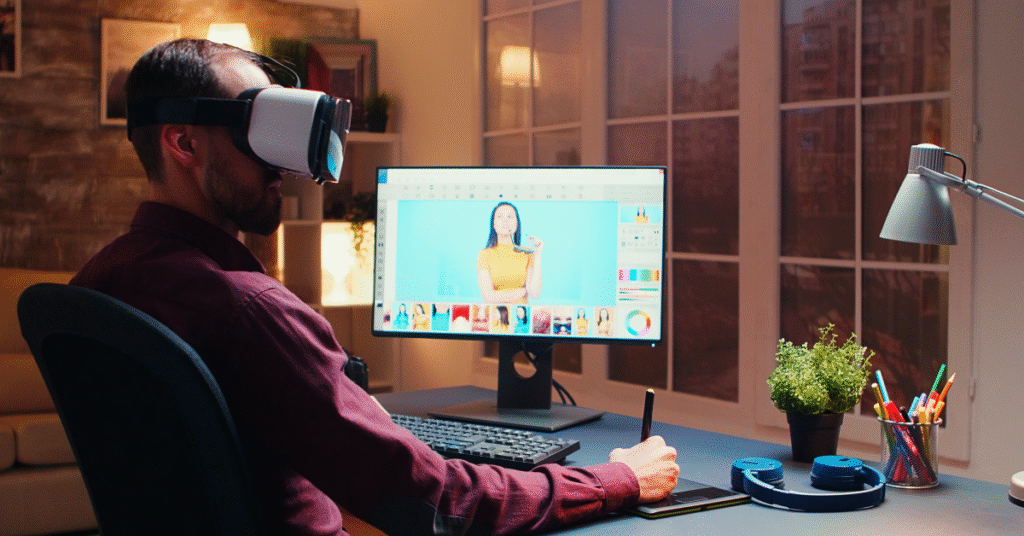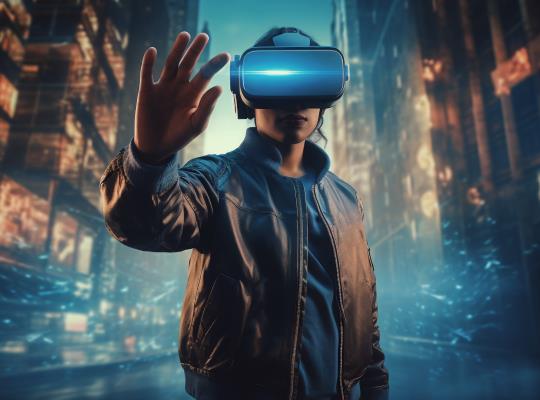When discussing augmented reality, one of the most common questions is: “What is a characteristic of augmented reality?” To understand the depth of this technology, it is essential to break down each defining aspect that makes ARwhat it is. Unlike traditional digital experiences, AR is governed by a very specific set of features that make it unique, powerful, and practical in today’s world.
In this comprehensive guide, we’ll explore every characteristic of AR, analyze why it matters, and explain how AR companies such as Quantile Corp design effective AR solutions built around these principles. By the end, you’ll not only know what a characteristic of augmented reality is but also gain a complete perspective on how they define the future of immersive technology.
Table of Contents
What is a Characteristic of Augmented Reality
At its simplest, a characteristic of augmented reality refers to the essential features that define AR technology. These features distinguish augmented reality from related concepts such as virtual reality (VR) or mixed reality (MR).
So when someone asks, “What is a characteristic of augmented reality?” the answer is: it’s a fundamental property that allows AR to integrate virtual objects with the real world while maintaining interactivity, accuracy, and seamlessness.

Core Characteristics of Augmented Reality
Now let’s break down each key characteristic of AR in detail.
Real-Time Interaction
Perhaps the most crucial characteristic of augmented reality is its real-time interactivity
- AR overlays digital elements on the physical world instantly.
- Users interact with these overlays seamlessly, without delay
- Unlike static images or pre-recorded videos, AR environments respond dynamically to movement and actions.
For example, AR filters on mobile apps demonstrate this characteristic daily: move your face, and the digital overlay adjusts in real time.
This characteristic of AR ensures that experiences are not only immersive but also responsive, making AR solutionshighly engaging.

Integration with the Real World
Another defining characteristic of augmented reality is that it doesn’t replace the real world, it enhances it
- Virtual objects are layered on top of real surroundings.
- Physical and digital elements coexist, creating a hybrid experience.
- This integration blurs the line between what’s real and what’s virtual.
Unlike VR, which isolates users, AR augments reality — an essential characteristic of AR that explains its versatility.
Companies like Quantile Corp, as an experienced AR company, design AR solutions around this principle to ensure users gain more from their real environment instead of abandoning it.
Three-Dimensional Registration
What is a characteristic of augmented reality that makes it feel natural? It’s 3D registration.
- AR systems align digital content with the real world in three dimensions.
- Whether it’s a 3D model, text, or graphic, the content is placed in the correct scale, angle, and perspective.
- This prevents AR from appearing as a “flat sticker” and instead makes it part of the real environment.
This characteristic of augmented reality ensures accuracy and realism, a cornerstone of professional-grade AR solutions.
Context Awareness
One of the lesser-discussed but critical characteristics of AR is context awareness.
- AR systems must recognize the physical space, surfaces, and environment.
- Advanced AR recognizes objects, faces, or locations to tailor the experience.
- For example, AR navigation apps use streets and landmarks to overlay guidance.
This characteristic of augmented reality allows digital content to be relevant and practical, not just decorative.
AR companies like Quantile Corp emphasize this principle in AR solutions to ensure that every overlay adds meaning and utility.
Seamless Blending of Digital and Physical
Another characteristic of AR is the seamless blending of the physical and digital worlds.
- Virtual objects appear as if they belong in the real environment.
- Shadows, lighting, and movements adapt to surroundings.
- The illusion is strong enough to convince the user’s senses.
This blending defines the augmented reality meaning in a tangible way. Without this characteristic, AR would feel clumsy and artificial.
Interactivity Beyond Visuals
When analyzing what a characteristic of augmented reality is, we must move beyond visuals. AR is also multi-sensory.
- Visual overlays combine with audio cues, motion sensing, and sometimes even haptics.
- Interactions may include gestures, voice commands, or device movements.
- The user isn’t just looking at AR — they’re actively participating in it.
This characteristic of AR is essential for building immersive AR solutions that encourage engagement and retention.
Portability and Accessibility
A practical characteristic of augmented reality is that it can work across multiple devices.
- Mobile phones and tablets have made AR highly accessible.
- Head-mounted displays and smart glasses enhance professional use cases.
- This portability allows AR to scale across industries and audiences.
As an AR company, Quantile Corp focuses on making AR solutions device-agnostic, a direct reflection of this characteristic.
Real-World Anchoring
What is a characteristic of augmented reality that ensures stability? Anchoring.
- AR relies on anchors to “lock” virtual objects into the real world.
- This prevents them from floating unnaturally or shifting inaccurately.
- Anchors can be surfaces, images, or GPS-based coordinates.
This characteristic of AR makes it practical for industries like healthcare, manufacturing, and education — where precision matters.
Scalability and Adaptability
Another significant characteristic of augmented reality is its adaptability.
- AR can scale from a single user app to enterprise-level deployments.
- It adapts to simple tasks (like AR shopping apps) and complex training simulations.
- This scalability ensures that AR remains future-proof.
Companies like Quantile Corp leverage this characteristic of augmented reality to design scalable AR solutions for diverse industries.
Persistence of Digital Content
Finally, a vital characteristic of AR is the persistence of digital elements.
- Some AR systems allow objects to remain in place even after sessions end.
- Persistent AR builds continuity, where digital elements interact with physical locations over time.
- This characteristic strengthens AR’s role in long-term use cases like education, manufacturing, and heritage preservation.
Why Focusing on Characteristics Matters
It’s easy to ask “what is a characteristic of augmented reality?” but the reason these characteristics matter is because they define usability.
Without real-time interaction, AR would feel slow. Without 3D registration, AR would look fake. Without blending, AR would appear clumsy. Each characteristic of AR plays a specific role in ensuring that augmented reality is effective, realistic, and valuable.

Conclusion
So, what is a characteristic of augmented reality?
It is the defining element that shapes how augmented reality functions and how effective it is in practice. From real-time interaction and 3D registration to seamless blending and context awareness, each characteristic of AR ensures that users experience reality enhanced, not replaced.
For organizations exploring AR solutions, focusing on these characteristics is critical. And with experts like Quantile Corp, you can ensure that every defining characteristic of augmented reality is translated into practical, impactful results.



